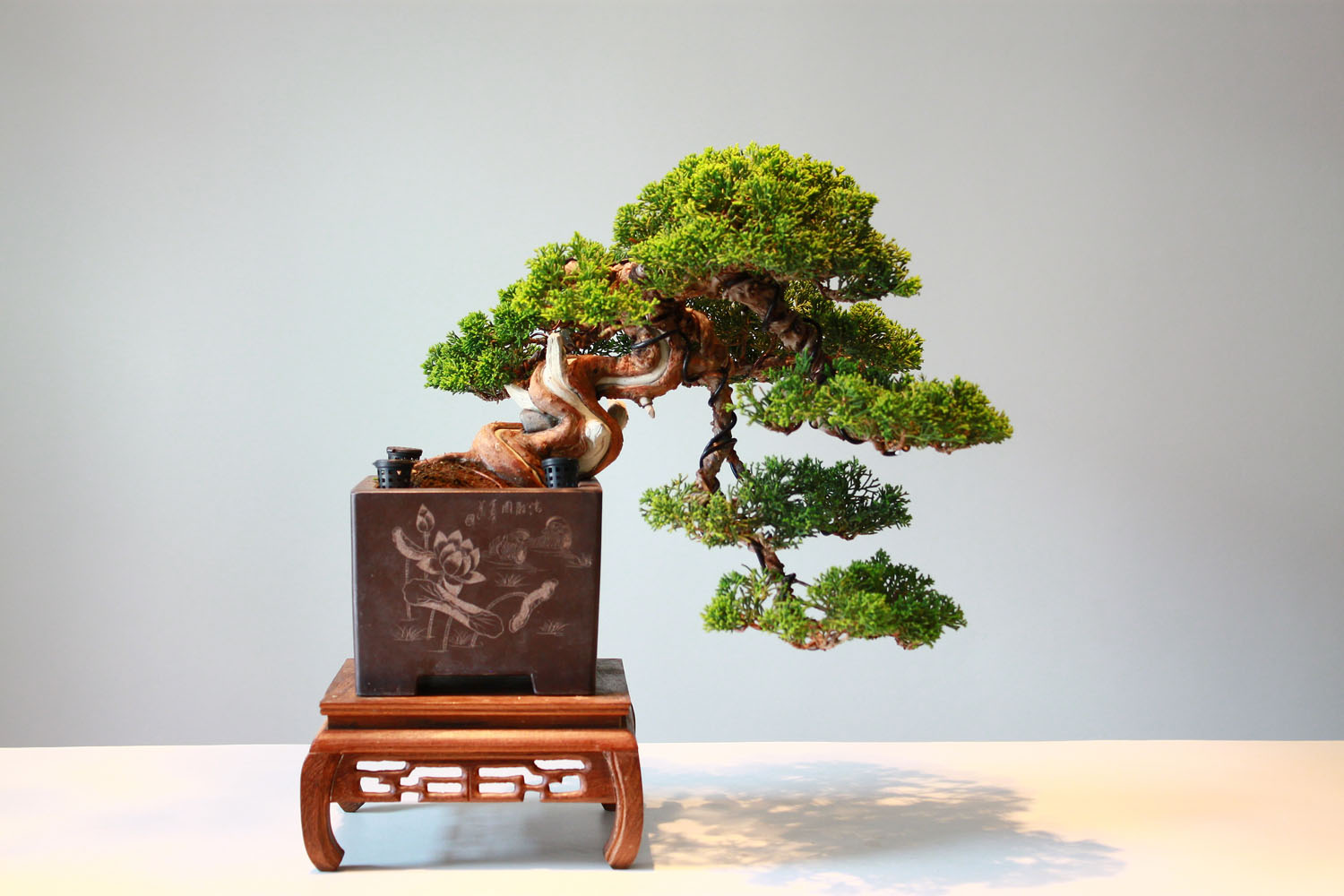

BONSAI TREE – ONE OF THE MOST POPULAR SYMBOLS OF JAPAN
Growing a bonsai tree
Bonsai tree comes from China. Due to the large area of the Chinese empire, the emperor was unable to visit his whole country. So to show him the distant landscapes, local artists presented them in the form of miniatures, where vegetation was an important element. Those models with the first bonsai trees initiated a long artistic tradition that later flourished in Japan.
Miniature trees reached Europe and the United States in the 19th century but their popularity peaked after World War II, especially in the United States. Their role was to compensate the losses that America suffered as a result of Japanese warfare. The Japanese emperor gave away a half of his collection, which can be admired as permanent exhibition to this day. Besides, bonsai trees came to Europe and the United Stated together with the soldiers who returned from the front, taking the miniature trees with them.
1970s and 1980s The tremendous popularity of bonsai trees in 20th century initiated their import from Asia. In time, the Europeans became so skilled at creating them on their own that their import was no longer a profitable option. Contemporary European specimens are admired worldwide.
Growing a bonsai tree by yourself
Every tree species can be formed so we can basically always obtain a miniature tree. However, for a tree to be fully classified as bonsai, it must also have a shallow root system and be placed in a flat flower pot – hence the name, as bon means ‘flat pot’ in Japanese while sai means ‘plant.’ If a tree that is being formed grows directly in the ground, we will say that it is only bonsai-styled.
It takes at least a dozen years or so to form a tree and it is a continuous process – plants keep growing, they are never “finished,” they continue to change and their individual appearance depends on their carer. Aside from standard watering and fertilisation, a bonsai tree requires regular trimming, shoot removal and formation with a wire which, when wrapped around a branch, gives the tree a specific shape and direction of growth. Species with woody shoots are chosen for cultivation, especially long-living ones, such as oak, pine, fir, spruce or juniper.
Flowering of a bonsai tree, which usually takes place after dormancy, is the reward for years of efforts and a sign that the plant is in good hands and is developing properly. The species is an important contributing factor too. Bonsai characterised by heavy flowering include apple tree, camellia and azalea.
Bonsai trees are usually styled to look like old trees formed through hundreds of years of natural growth. But there are also other bonsai styles, which differ mostly as to trunk shape and inclination angle.
Bonsai styles
“Bunjin,” or literati, is s style characterised mostly by highly spaced branches starting at 2/3 of the tree height, an inclined tree top, branches surrounding the trunk, in other words – great expression and free composition. It may have been inspired by trees growing for years in extremely difficult conditions. Another expressive form is “Fukinagashi” – a style shaped by wind, where branches grow only on one side. The trunk may be leaning either in the same direction as the branches or in the opposite one.
With its straight, strong trunk harmonising with the main branches formed like a pyramid, “Chokkan” is the opposite of dynamic compositions. Formation of trees according to this style requires tremendous precision. “Ikadabuki” is one of easier styles – it is a bonsai forest made of branches sticking out of a trunk buried in the flower pot. “Kengai,” or cascade style, has a trunk meandering down (the top of the tree should be below the bottom of the port).
Bonsai trees are often accompanied by additional elements of the composition, such as sand, plants, moss, rocks and stones, forming miniature “planted landscapes” (saikei). By carefully matching particular elements in the right proportions, one may precisely recreate a specific landscape in a mini version.














